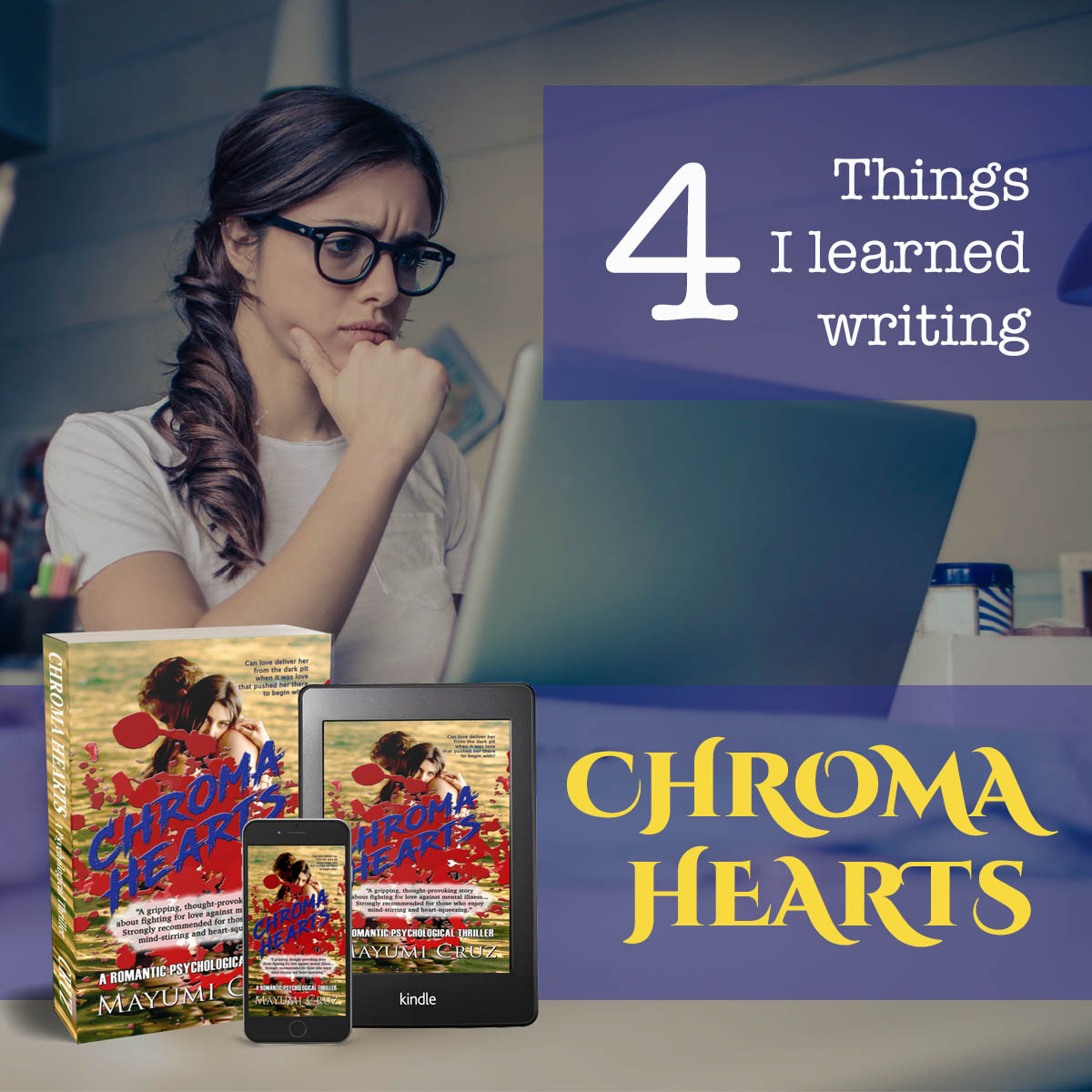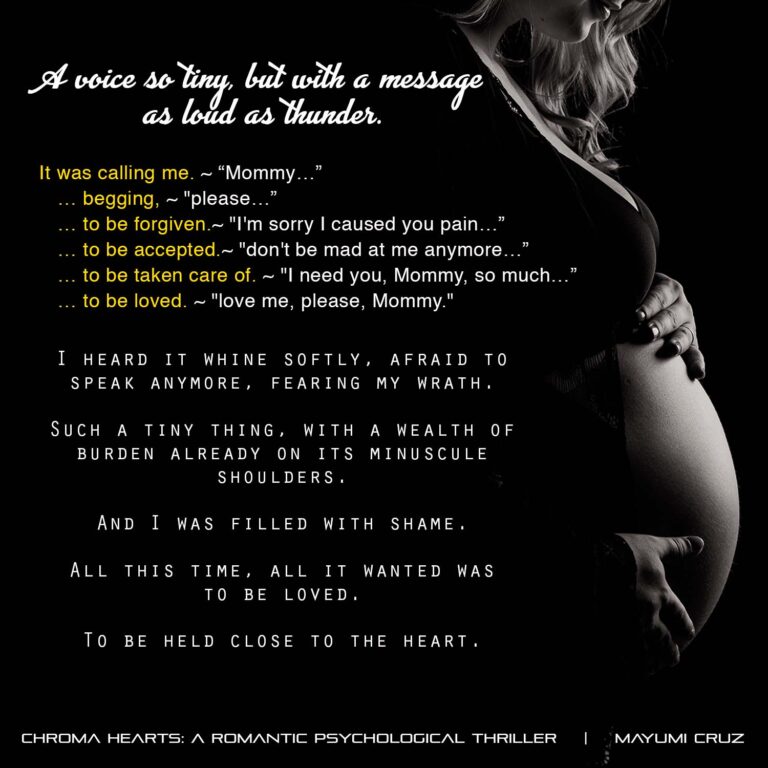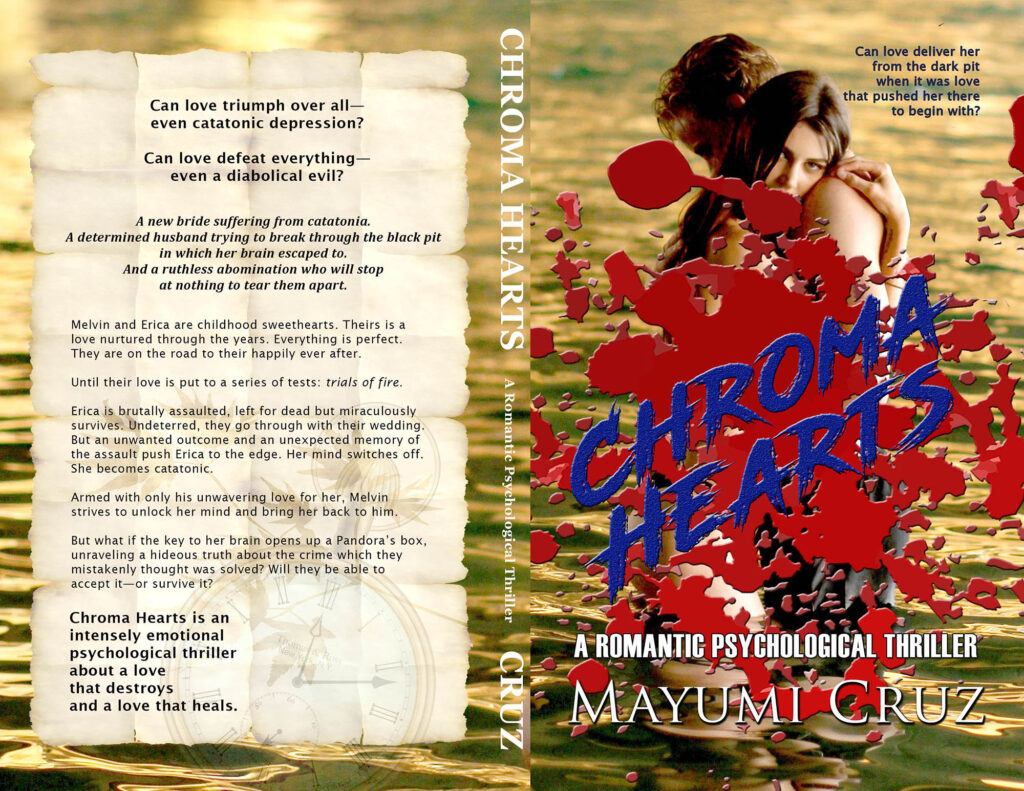If you ask me, most of the things I learned while writing CHROMA HEARTS, my romantic psychological thriller, are more than the number. They are infinite and intangible.
But before you close your browser at the prospect of a very long post, I am trimming it down to just four.
Chroma Hearts has been sort of a shocker for me, considering it was originally a fan fiction. It has been awarded Best Published Book of the Year and has received glowing reviews.
But the best review I got was a few days ago, and it blew me away. It also prompted me to make yet another “Things I’ve Learned While Writing” post.
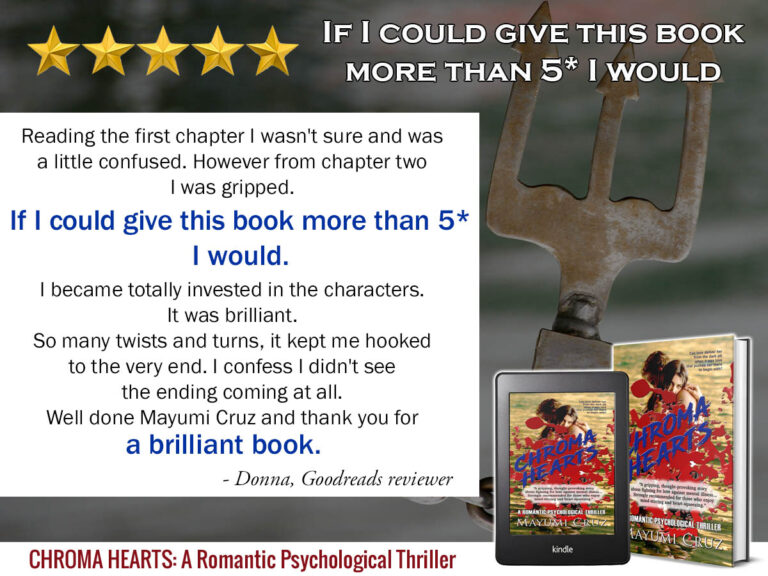
Some might find it amusing, thinking this as much ado about nothing. After all, I only have a handful of reviews compared to other books which have thousands.
But if you’re an indie author like me, each positive review is a treasure. You may ask, why?
Because it reinforces my decision to finally publish my own works.
It gives me the inspiration and courage to write another book, and another, and another.
It gives me the determination to improve my craft.
It gives me hope that somewhere out there, my ideal readers–readers who get me, who appreciate my style, who understand my mind–exist.
So if you’re someone who reads books and writes reviews, don’t ever let yourself think that you are just a reader. You are not.
You can spell the difference between a writer quitting and a writer continuing her craft.
But I digress. Here are the major things I learned while writing CHROMA HEARTS:
4 Things I Learned Writing CHROMA HEARTS
Catatonic Depression
In my book, the heroine (Erica) suffers from catatonic depression, a subtype of depression which causes someone to remain speechless and motionless for an extended period of time.
A person with catatonic depression does not respond to what is going on around them and may be silent and motionless.
You wouldn’t believe the amount of time and the number of websites I browsed into to read all about this illness–from what may cause it (neurodegenerative disease or brain lesion, emotional trauma), to the symptoms (they’re like breathing statues), and how to care for patients with catatonic depression.
Treatment can be in the form of drugs. It can also be in the form of Electroconvulsive Therapy (ECT). During ECT, doctors use electrical currents to induce a seizure, believing that it resets the brain’s chemistry and may help the patient to respond better to treatment.
In Erica’s case, it was more difficult. You see, in the book, she’s pregnant. I had to do additional readings and research on pregnant catatonic patients.
Reading medical cases like this was depressing and enlightening at the same time.
I felt for them. I emphatized, not only with the patients, but also for their loved ones.
And you know what? It helped me a lot in writing Melvin’s point of view. Melvin is Erica’s husband in the book.
Succinylcholine (SUX)
Trivia:
Succinylcholine is hailed by toxicologists as the world’s most discreet murder weapon.
Succinylcholine, or Sux, as it is commonly called by doctors and anaesthesiologists, is used before intubations.
It completely relaxes patients and makes every muscle unresponsive, to the point where the patient can’t breathe and can’t even blink.
In short, succinylcholine is an easy to inject poison, guaranteed-to-work quick. It is also almost impossible to detect.
In my psychological thriller book, CHROMA HEARTS, the use of this murder weapon coheres (connects) with Melvin and Erica’s profession.
In the book, Melvin was an anaesthesiologist. Erica was a registered nurse.
Villain Point of View
In writing Chroma Hearts, I used alternating first points of view of the major characters.
One of these major characters is the villain.
It wasn’t easy writing from a villain’s point of view. But it was necessary to raise the level of suspense in the book. It also exposed the villain’s innermost emotions and vulnerabilities and the reasons behind the villain’s dual personality.
While I will never condone any type of crime, writing as a villain teaches a writer that there is always two sides of a coin. Remember the movie Maleficent?
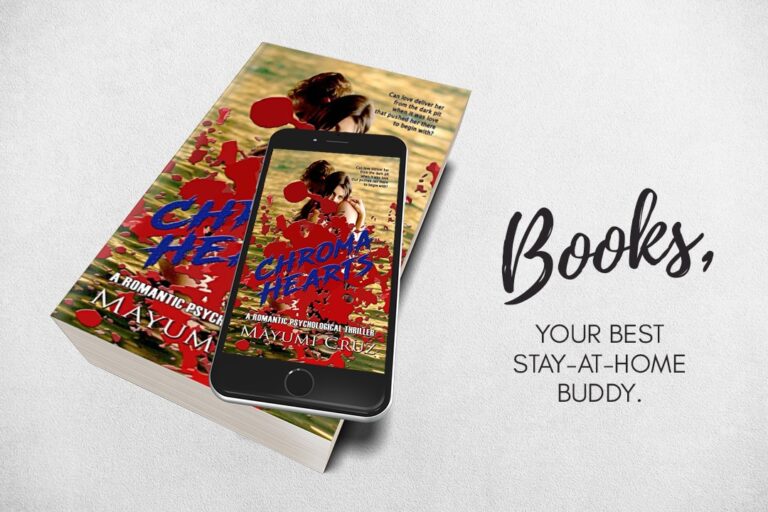
Nike Slogan
JUST DO IT.
Bet you didn’t expect that, did you?
But it’s true. The most valuable lesson I learned out of Chroma Hearts is the Nike slogan: JUST DO IT.
In 2016, I published my first book on Amazon. And like the novice writer with rose-colored glasses that I was, it left me depressed, down-hearted, and left me asking: Is this worth pursuing?
I stopped writing.
It wasn’t until early 2018, when I participated in the 8Letters Indie Publishing the Write Way Workshop, did I open my laptop and “unearthed” my Chroma Hearts manuscript.
In between those two years, I read, I researched, I taught myself, I joined writing groups, attended many writing workshops, and immersed myself in the ins and outs of writing, marketing, and other stuff an indie author needs to at least survive in the cut-throat world of literary enterprise.
After two years, I can say I was better equipped than before in knowledge about writing and self-publishing.
Even so, I didn’t want to be disappointed again. I was consumed with insecurity, indecision, and fear. I didn’t think my book was better than anyone else’s. I had no budget for ads.
But as I said, the best lesson I learned is this: Go ahead and just do it.
Of course, this doesn’t mean your work shouldn’t be the best you can come up with. I think I revised CHROMA HEARTS at least nine times.
But the most important thing is to have courage.
Take the first step. Then another. Analyze, learn, do it another way if needed.
JUST DO IT. Then repeat. Write the next book. And the next, and the next.
You can read everything you can get your hands on about writing, publishing, marketing. You can keep on improving your craft before writing, or as you write that book, or take crash courses before venturing into self-publishing. You can wait and work on making your book flawless and perfect.
But all those knowledge and information will change as time passes by. The market changes. Readership choices change. And regardless of what you do or how many editors have taken a look at your manuscript, there will always be something that won’t read right. Then where will your book be? Under your pillow, inside your drawer. Hidden, out of sight.
The best lessons on being an author that will yield results are waiting for you AFTER YOU TAKE THAT FIRST STEP.
Write that book. Write it as best as you possibly can. Finish writing. Then query for a literary agent/publishing house, or self-publish.
The important thing is to take action. JUST DO IT.

